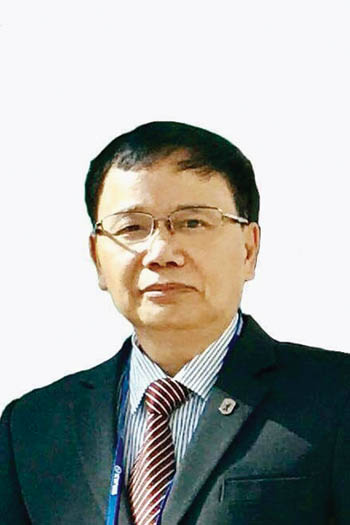With its fascinating and contemporary theme, “Smart lighting in smart city”, the 2018 scientific workshop on lighting has attracted the attention and registration of Central and local state management agencies, leading scientists,consultantsand enterprises in the field of lighting in the country and internationally, etc. and all members of Vietnam Lighting Association. Prior to the event, Chairman of Vietnam Lighting Association, Assoc. Prof. Dr. Nguyen Hong Tien shared and highlighted some problems, areas of focus for clarification through the workshop, in which support Vietnam lighting industry and those involved in the field of lighting to actively orientate their position in the industrial revolution 4.0. Lighting and Life would like to invite you to read the content of the discussion.

Reporter: The Fourth Industrial Revolution, with the concept of internet of things, is being socially interested. With the theme “Smart lighting in the smart city”, the National Science and Technology Workshop on Lighting 2018 will focus on which areas, Chairman?
Assoc. Prof. Dr. Nguyen Hong Tien: The theme of the workshop, “Smart Lighting in Smart Cities” 2018, organized by the Vietnam Light Association in Hai Phong, will focus on two issues of concern: (1) Smart lighting and Smart lighting system; (2) smart lighting in smart cities.
Firstly, about smart lighting and smart lighting system. There have been many studies of smart lighting and at the same time, through these studies, the concept of smart lightinghas been introduced. It is the use of lighting control technology to achieve two objectives (1) Improve the quality of lighting, changing the indicators of light of the environment illuminated such as illuminance, glare, color rendering index (CRI) and aesthetics, (2) power savings for lighting.
Smart lighting system in which the system is dynamically controlled to adjust brightness and colors accordingly; enables the integration of lighting with the functions of the illuminated environment, utilize natural light and save energy, safely but still meeting the needs of the user. Smart lighting system can include the following key components: (1) LED light source, which is the optimal light source for efficient and economical lighting; (2) Sensor (passive infrared sensor and radar sensor); (3) Controllers (switches, motion detectors, remote controls, smartphones, computing devices) and intelligent lighting controllers allowing remote control of LEDs and non-LEDs from anywhere; (4) Communication Network (wired and wireless connection).
Second: Smart lighting in the smart city. Smart city, at the whole, according to an article in VNPT’s Information Society Magazine: It is a sustainable and worth living city; There are more services, more facilities, fairer equality, more saving and improved living environment. Smart City looks at the technology side as a city utilizes information and communications technology applications that connect sensors, high-speed wireless networks, and large data processing to improve the quality of life of residents, improve the quality of service of urban administrations, reduce energy consumption, effectively managing natural resources. To assess smart cities based on the level of intelligence of the infrastructure including smart lighting.
Smart lighting plays an important role in building and developing smart cities. Smart lighting along with smart lighting system not only bring light at night to meet the needs of people for traveling, improve traffic safety, social order and security, but also contribute to the beauty of the city, the architecture of the work, the glorification of modern civilization and thereforesmart lighting is considered an important component in smart cities towards sustainable development.
 Reporter: What is the direction, solutions of the Vietnam Lighting Association to help the Sectors and Members to accelerate the implementation of “Smart lighting in Smart Cities” in Vietnam?
Reporter: What is the direction, solutions of the Vietnam Lighting Association to help the Sectors and Members to accelerate the implementation of “Smart lighting in Smart Cities” in Vietnam?
Assoc. Prof. Dr. Nguyen Hong Tien: In the past few years, smart lighting solutions have been applied to many fields of transportation, construction, health, education, energy and especially in street lighting with automatic sensors, adjusting the lights with surrounding environment etc., or connect, control and remote management of street lighting in the city etc., have contributed to manage urban lighting more efficient and more secure.
In order to accelerate the application of new technologies, especially Smart Lighting, we need to focus on implementing the following contents: Firstly, there should be a comprehensive assessment of the lighting situation of urban areas (light sources, lighting equipment, electricity for lighting, management and operation of lighting systems, resources, capacity etc.) and the existing condition of production capacity, design capacity, construction etc. From this finding, to build a database, task oriented step by step plan to invest in construction etc. Secondly, to make lighting planning in which contains contents in urban master planning. Thirdly, prioritize the use of state investment to develop smart lighting in urban public spaces. Fourthly, study and promulgate standards and technical standards related to smart lighting (design, construction, production of materials, equipment, control, inspection, operation and exploitation etc.). Fifthly, study and promulgate mechanisms and policies to encourage the application of smart lighting in urban areas (capital, enterprise tax, export tax, import tax, bidding, etc.) and incentive policies. The economic sectors are involved in investment and development of special lighting applications of new technology. Sixth, to organize training in capacity building in design, construction, management, operation, maintenance, repair and maintenance of smartlighting systems (identify the needs, develop program, organize training courses for each subject etc.). Seventhly, to increase the propaganda and popularization of the superiority of smart lighting, innovation of scientific progress and application of new technologies in smart lighting.
Reporter: Thank you, Mr. Chairman!
Lam Hong



